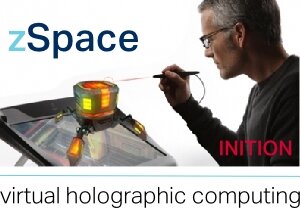Just 4000 people tuning in to BBC 3D Olympic highlights
Information supplied by overnight ratings provider Attentional.com reveals that, from July 30th to August 7th, the average audience for the BBC 3D one hour highlights programme broadcast nightly at 23.00, was 10,460 despite heavy promotion.
On ‘Super Saturday’ August 4th, the audience peaked at 79,000 with a minimum of 6,200 tuning in. What might make for even more depressing reading is that the overnight average for the August 5th, 6th and 7th has been just 4,000 viewers.
The data does not include the numbers for the live Eurosport 3D coverage on Virgin Media and Sky 3D. However, the BBC will study these figures closely when deciding whether to invest in future 3D sport broadcasts, especially when people are highly sensitive about what the license fee money is being spent on. Panasonic, the offic
Last Tuesday, official Worldwide Olympic Partner Panasonic announced this summer’s Olympics 3D coverage marked “the end of the beginning” to drive 3D entertainment into the home. The company predict an accumulated 1 million viewers to watch the Games in 3D, which is still just 0.25% of the estimated worldwide audience of 4 billion.
Paul Gray, Director TV Electronics & Europe TV Research at Display Search tells 3D Focus “Our estimate would be there are around 1.5 million 3D TVs in the UK today. This would include sets that are sold without glasses. Not all of these sets can receive 3D broadcasts as there are sets out there which rely on terrestrial broadcast but do not have the necessary Freeview HD decoder for BBC HD reception”.
Despite this, the Twitter users are highly positive about the Olympics 3D coverage. We have analysed the Twittersphere over the past 24 hours and the majority of users appear to be preferring the 3D coverage. So what is going wrong? Is it simply a lack of awareness? a lack of 3D glasses? or does the initial novelty soon wear off?
During this year’s Wimbledon Tennis Championships 3D live broadcast, BBC Sport Executive Producer Paul Davies said “We know 3D per'se has its attraction. I think many viewers would have been to a 3D film in the cinema and fully appreciated the impact and immersive experience that 3D offers. From a sporting perspective I think the jury is still out.”
The BBC is half-way through a 3D trial. Later this month, a CG one hour programme called Planet Dinosaur will air followed by 3D coverage of Last Night of the Proms in September. Head of BBC 3D Kim Shillinglaw said “Bringing Planet Dinosaur and The Last Night of the Proms to audiences enable us to test the technology across various genres and establish where 3D really enhances the viewers’ experience.” The BBC is also planning a 3D scripted comedy drama next year.
FREE WEEKLY 3D NEWS BULLETIN –



















